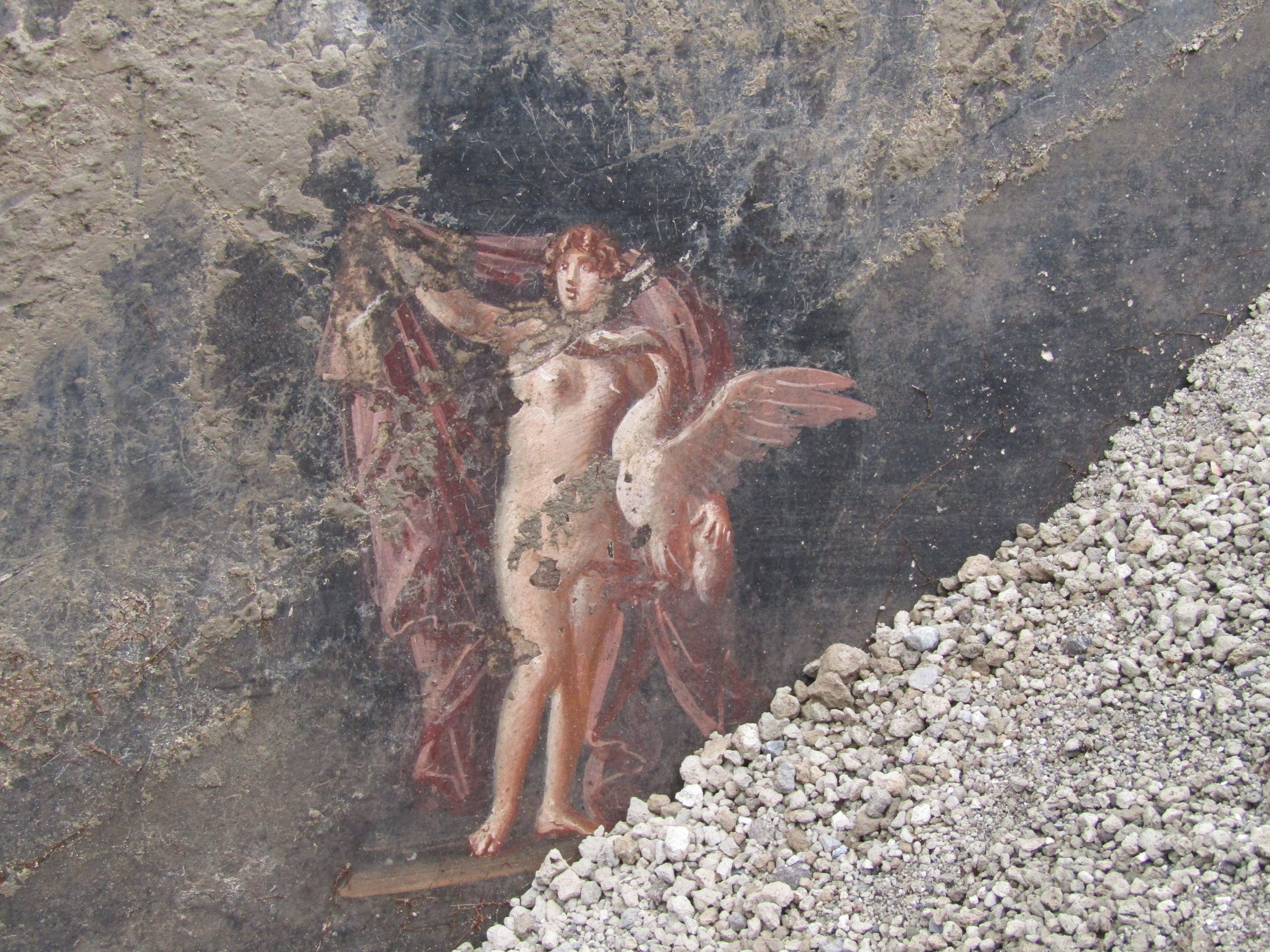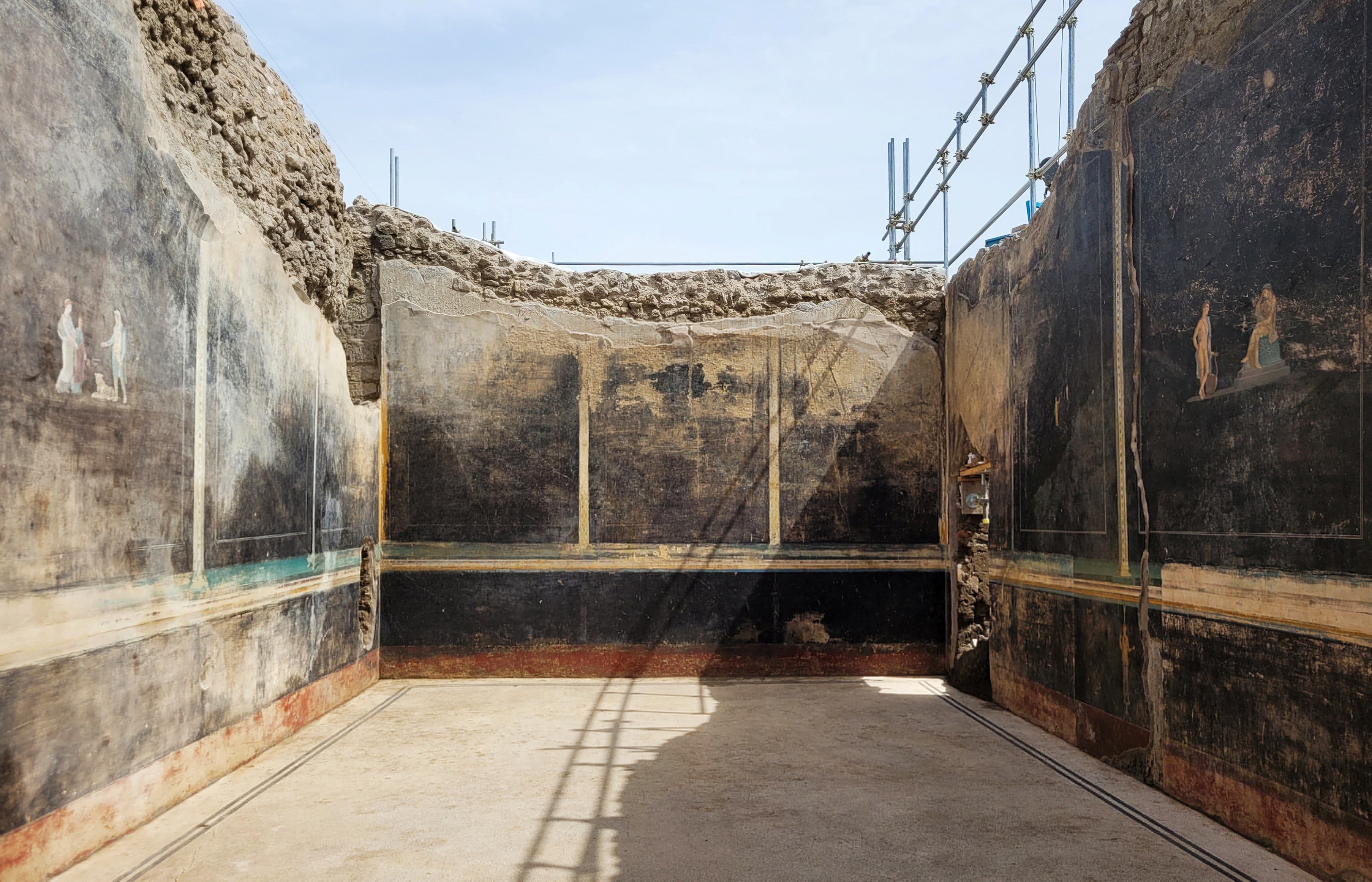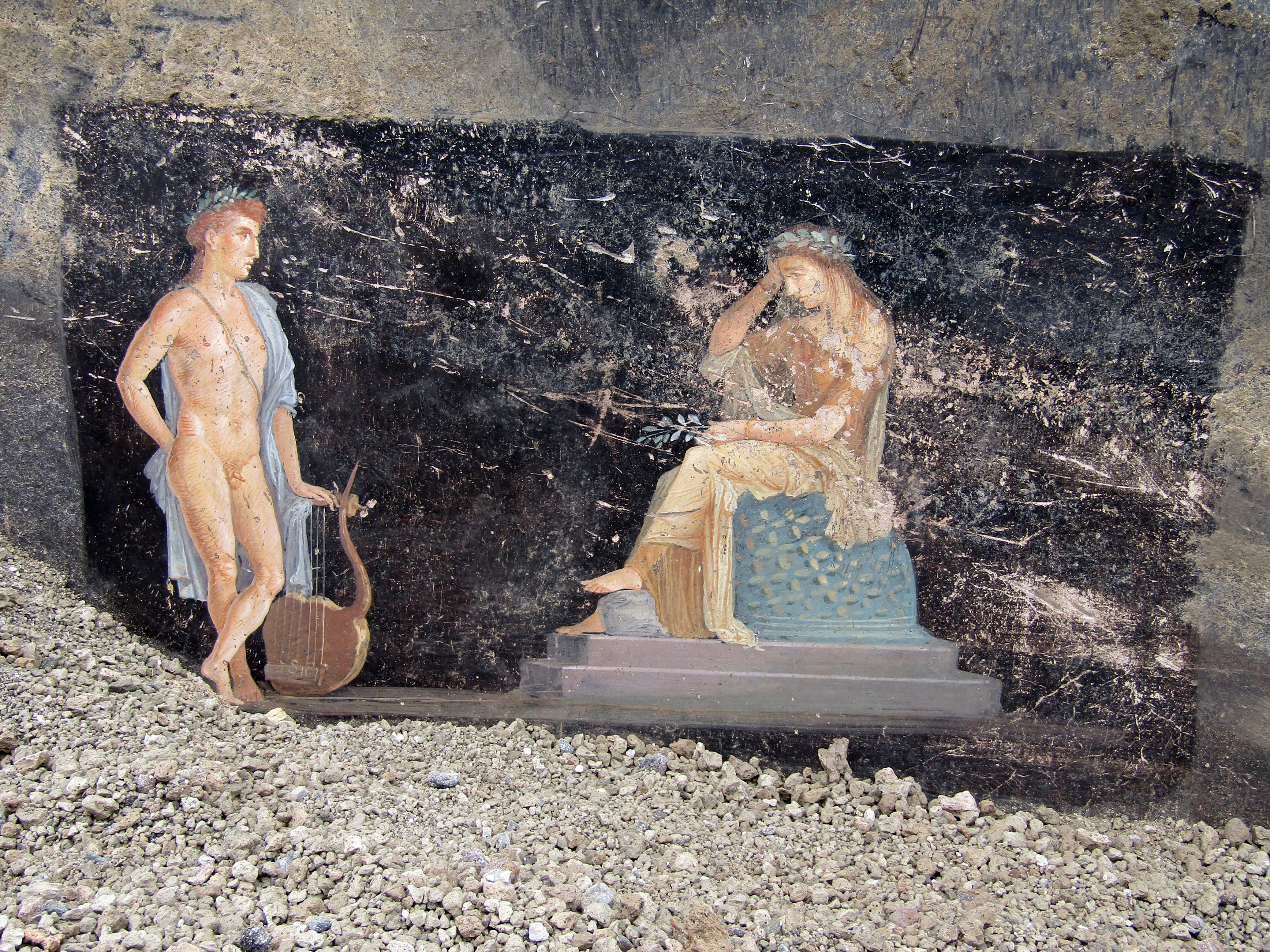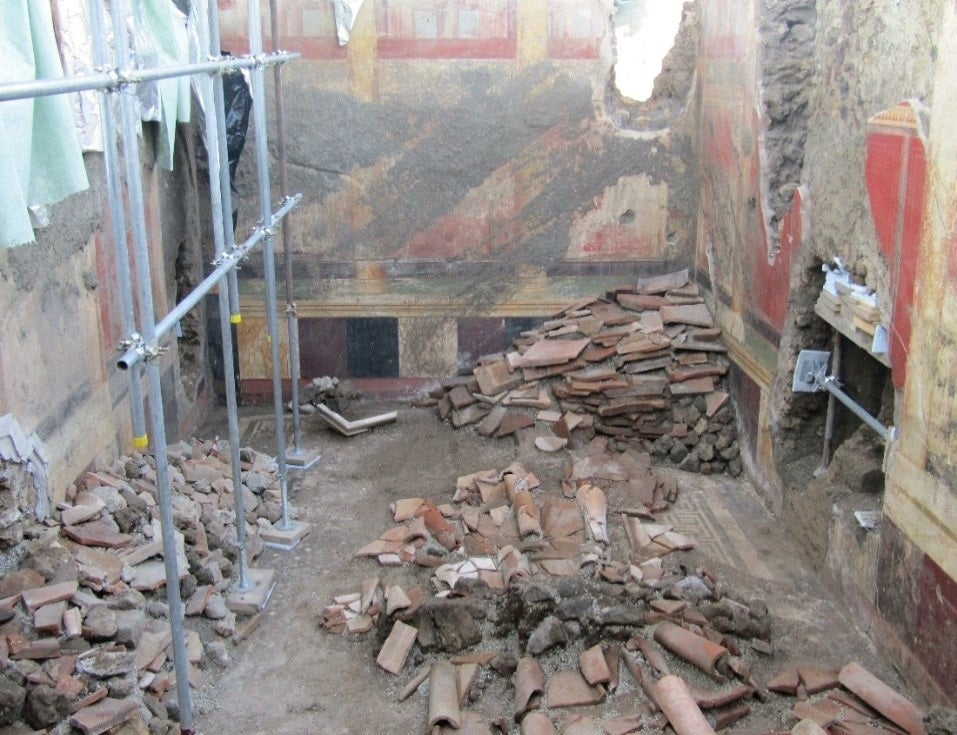Pompeii is the gift that keeps giving – and there are so many more treasures to come
As incredible new discoveries are found at the archaeological site, Professor of classics Michael Scott and presenter of ‘Italy's Invisible Cities’ takes a closer look at what this new unearthing tells us about how the Romans really lived…

You might think a site that has been excavated since the 18th century has little left to surprise us with. But Pompeii is the gift that just keeps on giving. Partly because – despite how long we have been working on it – there is still so much to uncover: one-third of the ancient city is still yet to be cleared of the thick ash layer that was laid over it by Vesuvius in 79CE.
We are in the middle of extraordinary new discoveries from Pompeii because of the big effort that has been put in over the last few years to excavate different parts of this un-investigated area.
As a result, we have seen a spectrum of amazing finds being unearthed that speak to the wide variety of lifestyles, work, wealth and fashions that criss-crossed the Roman town, which was famous in antiquity as a summer bolthole by the sea for wealthy Romans.
From industrial-sized bread ovens, to serpent shrine frescoes and the enigmatic decorative image of what many initially thought was a pizza (spoiler: it wasn’t!); to the physical skeletal remains of women and children hiding under their staircase from the eruption, as well as a man who seems to have survived the initial volcanic blast but then got pinned down beneath a falling piece of masonry; to the endless graffiti (one charcoal inscription shifted our understanding of when the eruption took place), we are getting, more than ever before, a sense of Pompeii as a living city – warts and all.
I have visited, studied and filmed at Pompeii many times. It is a bewitching place where you can all too easily forget you are in an ancient city destroyed by a volcanic eruption, as you walk down paved streets with buildings towering above you.
I have particularly enjoyed in recent years both the high-tech and low-tech approaches to conservation and care of the site: in March last year, 150 sheep were let loose in specific areas to eat the grass that was slowly taking over and weakening ancient structures. This saved authorities both time and the need to use harmful chemicals to achieve the same result. Sometimes the old ways are the best.
But it is the tantalising sense of discoveries still to be made, that emanates from the as-yet-unexcavated areas of built-up mounds of volcanic ash, that always brings me back. The most recent finds (to be explored more in a new BBC documentary airing on 15 April) are from “regio” (”region”) 9, in the heart of the ancient city.
Most attention-grabbing is the entertainment space, called by archaeologists the “Black room”, because its walls are painted plain black, bar for some exquisite images at roughly head height around the room, that spring out from the black background in rich warm colours.

This was no grunge-teenager room, but a distinct fashionable choice of wall design in ancient Pompeii. The quality of the colour images that spring out from the walls is unmistakable. Exquisitely painted scenes from myth connect together around the theme of the lead-up to the 10-year-long war at Troy. One image depicts the king of the gods, Zeus, in disguise as a swan, seducing the beautiful Leda, who went on to give birth to Helen – she of the face who launched a thousand ships.
Another image, telling a key moment of the story from the Trojan side, shows another of the gods, Apollo, having his amorous advances refused by the Trojan priestess, and famed seer of the future, Cassandra.
He leans, naked, nonchalantly, on his musical lyre (Apollo was famed as a patron of the arts). She holds her head in her hand, her gaze modestly lowered. But for slighting him, Cassandra was cursed by Apollo so that none of her prophecies about the future would be believed – including what would become of Troy if Paris brought Helen there with him, or what would befall the Trojans if they accepted the gift of the wooden horse from the Greeks.
A third image brings these stories together to show the moment when the Trojan Paris, having been asked to judge the competition of the most beautiful goddess (for which Aphrodite, goddess of love, offered Paris the heart of the most beautiful woman in the world, if he picked her), meets that woman: Helen, product of a mortal woman and the king of the gods.

A loyal pet, slumped at Paris’s feet, looks directly out of the image towards the viewer, conveying a grim sense in his sad eyes of what misfortune is about to unfold. Even if Cassandra won't be believed, his face says it all.
We have to imagine these newly discovered images as seen by the flickering of many oil lamps, as guests of the wealthy owner gathered together to recline and feast and talk.
The lamps – whose sooty outpourings would have blended in with the black wall background, would have caught and spotlighted different elements of each of these images as flames flickered making the story come alive, sparking conversation among the wealthy dinner guests about fate, beauty, the heroes of bygone ages and the power of the gods.
All this is combined with a floor in this room that is composed of over 1 million white tiles. A dazzling floor of clouds surrounded by the blackness of the sky, punctuated by pockets of beautiful art, it must have been an entertaining room to be proud of.
But what interests me more than what is inside the room is the discovered neighbouring structure to this “black room”. It is part of an ornate residence, with a lush garden, and beautiful reception room – decorated in a completely different style of much more colourful wall painting.

But it is also just over a metre away from – on the other side of a wall or two – a very different kind of space: a working bakery and a laundry. Laundries in ancient Italy famously used urine as their key active cleaning ingredient – and this was a decent-sized laundry with a massive washing tub at its centre.
It was smelly hard work, done by slaves. The bakery was no better. Right up against the private resident was stabling, probably for the donkeys that helped drive the mill to grind the floor, around which more slaves lived and worked in cramped confines. Two very different styles of life set cheek by jowl with one another – something we need to realise was often the norm in ancient Roman cities. No luxury leafy suburbs separate from the industrial areas of town, but a much more mixed up and, as a result, starkly contrasting, urban fabric
In fact, archaeologists now think they were linked: by the same owner. The same initials, ARV, have turned up in all three spaces – linked to a super-rich Pompeii politician and businessman called Aulus Rustius Verus.
As he sat enjoying his parties in his wondrous black room, two of the engine rooms of his wealth were literally just behind him. This really is the perfect example of how the other half lived just over 2,000 years ago.





Join our commenting forum
Join thought-provoking conversations, follow other Independent readers and see their replies
Comments